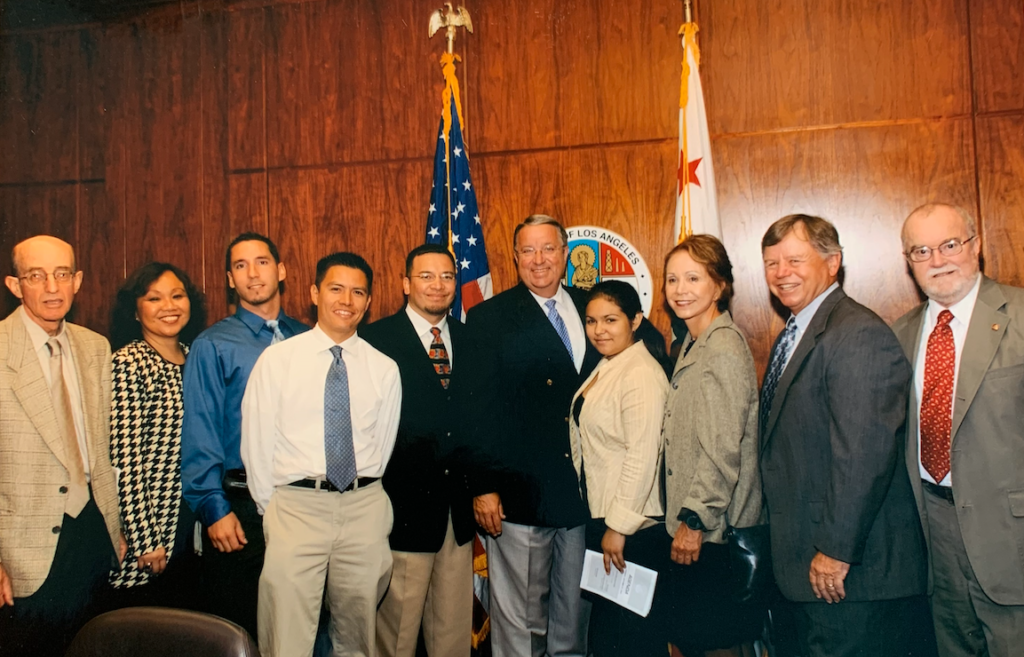What is the Human Services Academy (HSA) Model?
The Human Services Academy (HSA) was founded in 1997 as a workforce development program at Mental Health America of Los Angeles. The HSA model started as a school-within-a-school program that operated at two Los Angeles Unified School District (LAUSD) high schools. The HSA model was designed to: (1) support student’s academic engagement; (2) improve student’s college and career readiness in the mental and behavioral health field; and (3) support student’s social and emotional wellbeing. The HSA model combined classroom instruction with real-world experiential (work-based) learning experiences for students interested in the helping professions.
Why the HSA Model?
A mental health careers pipeline. The shortage of a culturally and linguistically appropriate workforce available and accessible to youth from historically underserved and underresourced communities continues to be a major concern. For students who need access to services, resources, and/or referral, must be able to find those supports on their school campus. However, there is a lack of well-trained care providers in schools and communities who are familiar with the language and culture of students. A school-based pipeline program and curricula that promotes and expands career and technical education to fast-track secondary, post-secondary, and career opportunities in mental health is needed.
Peer support educators. Fostering inclusion and sense of belonging on a school campus, requires peer-to-peer leaders and trusted adults. There is a well-documented connection between youth who seek help from a friend or an adult they trust with feeling heard, understood, connected, and supported through community. Youth development means using strength-based or asset-based strategies to build and strengthen youth resilience in collaborative spaces. Being a peer support educator means organizing and mobilizing to advocate for changes that improve the wellbeing of youth. This is an example of creating diverse education, training, and mentoring pathways that can maximize options and opportunities for youth’s future employment in health care.
Curriculum alignment and relevance. The alignment among the mental health field, education system, and community concerns is essential to building healthy communities linked to economic development and long-term prosperity. Additionally, leveraging curricula from diverse sources can result in supporting student’s decision-making and long-term planning toward a pathway in the helping professions. This can be critical to addressing the immediate workforce shortages in health and mental health care, and improving both the classroom and workplace with more attention to wellness. For youth, it means using, connecting, and applying new knowledge with their prior knowledge and lived/life experiences. Curriculum and classroom instruction is relevant when students are encouraged to integrate their strength/asset-based experiences with real world leadership development opportunities.
The Original HSA Model and School Sites
The original HSA model was established at two high schools in LAUSD. The first HSA was opened at Narbonne High School in 1998 and operated for 15 years. The second HSA was opened at Huntington Park High School in 2000 and after 13 years as a school-with-in-a-school, it transitioned to a small public pilot school names Huntington Park Institute for Applied Medicine (HPIAM). HPIAM is one of three pilot schools located on the Linda Esperanza Marquez High School campus.
The Origin of the HSA Model View Report
The Updated HSA Model View Conceptual Model

